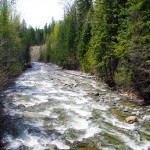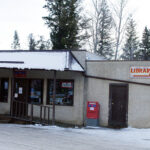Home »

Council allocates community grants
By Nowell Berg
On January 22, City of Kimberley council held its regular bi-monthly meeting.
Councillors Sue Cairns, Kevin Dunnebacke, Woody Maguire, Jason McBain, Sandra Roberts and Steven Royer were present along with Mayor Don McCormick.
An archive of the meeting can be found on the City of Kimberley YouTube channel. Watch it here.
Community Grants Allocated
Pam Walsh, Manager of Community Development and Communication, presented council with the final allocations for the Community Project/Events Grants.
Walsh pointed out the Healthy Kimberley Food Recovery Depot made a request for a standing grant ($14,010), which would automatically be allocated every year. Council unanimously approved that request.
Four historic standing grants (total of $92,205) were also presented to council for approval. They include Heritage Museum Society ($27,226), Arts Council ($29,013), Trails Society ($26,089) and Chamber of Commerce ($9.877).
In total, 31 groups applied for grants totalling $223,943, The city had $128,473 available for non-profit organizations and registered societies.
The top eight grants went to:
Health-care Auxiliary – $11,374 (ceiling finish);
Sparks Society for Youth – $10,268 (infrastructure upgrades);
Health Centre Society – $9,780 (audit cost);
Helping Hands Foodbank – $8,571 (community kitchen);
Elks Club – $8,323 (infrastructure upgrades);
Curling Club – $6,877 (Fall Fair);
Arts Council – $6,864 (First Saturdays);
Meant to be Loved Animal Rescue – $6,486 (spay/neuter program).
Mayor McCormick introduced a motion to “assess the community grants policy and have staff come back with a report and recommendations.” He noted there has been a “shift” from ad hoc grants to more requests for standing grants. The review would look at what the “money is used for,” he said.
Walsh added, “A review would look at funding amounts, allowable expenses, eligibility of applicants, clarity around the various types of grants and streamlining the voting process.”
Deputy chief administrative officer Jim Hendricks said, “It’s long overdue that we do a bit of an overhaul on this policy.”
He noted that other communities similar to Kimberley have discretionary grants that total $15,000.
Animal Control and Bylaw Enforcement – Q4 (Oct. to Dec.) Report
Bylaw Enforcement Officer (BEO) Lever submitted a fourth quarter report.
Total calls for service were 199, compared to 265 last year. Of the 199, fully 109 calls fell under the Streets & Traffic Bylaw.
Maryse Leroux, speaking on behalf of BEO Lever, told council the drop in calls for service was “due to a lot of pro-active actions taken by the BEO.” Over-all, animal complaints are down 15% from last year and streets and traffic down 19%.
Leroux told council, “We have had a lot of success in court with getting pets spayed and neutered.” Leroux added the city is “feeling pretty solid on our court process for parking tickets.”
In terms of animal control, BEO Lever’s report indicated 878 dog licenses have so far been issued compared to 859 last year. Since October, there have been only 13 dog at-large and two off-leash complaints, and zero dog attacks.
Thirty-three tickets were issued totalling $1,775 in fines.,
Invasive Species Report
Nathan O’Reilley from Spectrum Resource Group, contracted by the city to manage invasive plants (IP), reported on mitigation activities taken in 2023.
O’Reilley told council the two primary methods of invasive plant control are mechanical and chemical. Mechanical control includes “hand pulling, digging, dead-heading and foraging with goats and cows.” While some mechanical control was used, the primary mechanism is herbicides, VP480 (active ingredient Glyphosate) and Clearview (active ingredient Aminopyralid).
“In 2023, we significantly reduced the use of Glyphosate,” said O’Reilley. “There’s been a huge backlash about this herbicide, so we switched to Clearview, which is primarily used on road right-of-ways, open areas and away from homeowners.”
Since making the change, “We noticed a huge difference in pubic opinion in the city. Almost zero complaints and higher efficacy across the board.”
Last year, a total of 78.6 hectares of IP species were inventoried in the city. Of that, 49 hectares contained species that required priority treatment.
Blueweed, “the most prominent and concerning IP” was found in “95 unique sites” covering just over 18 hectares, a decrease of nine sites and almost four hectares from 2022.
Other priority species include spotted knapweed, scentless chamomile and dalmatian toadflax.
In 2024, Spectrum plans to implement a community weed pull and outreach program. O’Reilley said that with 20 to 30 people, “in just a few hours we can eradicate seed spread that season in a massive field.”
Community awareness includes door-knockers, social media, newspaper and radio ads, and a telephone hotline. Expect to see more of this in 2024.
Kimberley city council meets twice monthly starting at 7 p.m. The next regular council meeting: February 12.
e-KNOW file photos
e-KNOW








